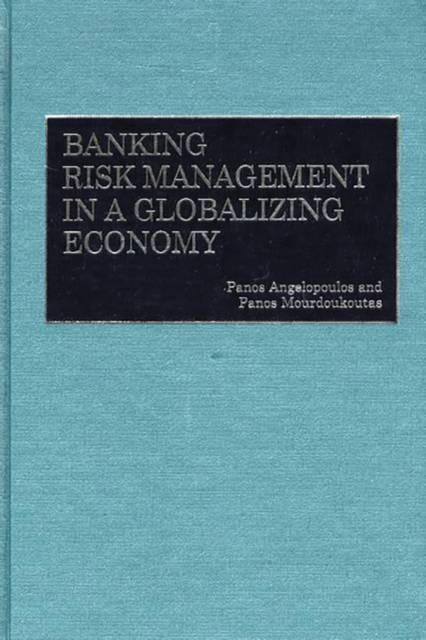
- Retrait gratuit dans votre magasin Club
- 7.000.000 titres dans notre catalogue
- Payer en toute sécurité
- Toujours un magasin près de chez vous
- Retrait gratuit dans votre magasin Club
- 7.000.0000 titres dans notre catalogue
- Payer en toute sécurité
- Toujours un magasin près de chez vous
Banking Risk Management in a Globalizing Economy
Panos Angelopoulos, Panos MourdoukoutasDescription
Banking is now an active asset-liability risk management enterprise, attributable in large part to the globalization of commerce. The authors of this descriptive yet practical, applications-oriented book examine the sources and management of traditional and nontraditional banking risks, then the conventional on-balance sheet and the modern off-balance sheet risk management methods. Unlike other more general risk management books, however, they focus closely on the use of financial derivatives--instruments to control the core risks attributable to credit and to fluctuations in interest and foreign exchange rates. The authors cover all this and more, giving experienced and novice practitioners both an easily accessed way to understand and cope with the banking risks they are already familiar with, and the new risks just emerging. The book will also be useful as a supplemental text in college-level courses on money and banking and on the operation of financial markets in general.
The authors begin by explaining how banking has moved from a routine financial process to an active and impersonal process of risk management, from relationship banking to community banking. Even banks that have stayed with traditional lending are now assuming greater risks. The authors then focus on the details of measuring, monitoring, and controlling risks. They define risk and the different philosophical approaches to its management, then continue with a discussion of operational matters, such as risk identification and classification. They discuss the evolution of banking risk management and the banking environment of the 20th Century, with special attention to the differences in methods used during the time of fragmented and highly regulated economies and those used in the highly integrated global economies of the last quarter century. The book describes in useful detail the major financial derivative products: forwards, options, caps, collars, and swaps, and their uses as risk management devices and tools for speculation, both. The book also treats on-balance sheet risk management methods, such as credit options and credit swaps. Interest rate risk is also covered in detail, and so too the management of foreign currency risk.Spécifications
Parties prenantes
- Auteur(s) :
- Editeur:
Contenu
- Nombre de pages :
- 184
- Langue:
- Anglais
Caractéristiques
- EAN:
- 9781567203400
- Date de parution :
- 30-03-01
- Format:
- Livre relié
- Format numérique:
- Genaaid
- Dimensions :
- 161 mm x 242 mm
- Poids :
- 412 g

Les avis
Nous publions uniquement les avis qui respectent les conditions requises. Consultez nos conditions pour les avis.






